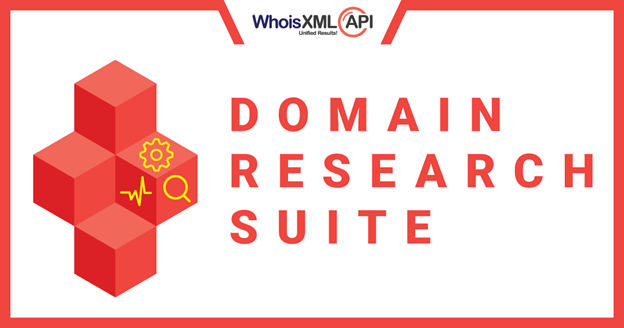5 Powerful Use Cases of Domain Research and Monitoring Tools

In today’s business landscape, it is almost impossible to be successful without setting up an online presence. What’s more, if you are launching a company or product, thinking about which domain name to use is a priority. In fact, it cannot be randomly picked as you must deeply connect with your target audience. But the domain registration market is highly dynamic, and it is advisable to secure domains of interest before someone else does. How can you do that?
You can check whether the names you want are free or taken with domain research and monitoring tools. With these, you can also anticipate your competitors’ next moves and better understand what has been going on backstage. Let’s look at some specific use cases based on real-life examples.
1. The Amazon’s ScratchPad Rumor
A few years ago, Amazon bought a series of domain names containing the term ScratchPad — i.e., amazonscratchpad.com, amazonmwsscratchpad.com, and mws-scratchpad.com. This led many to believe that the company was planning to launch a new tablet. It was later found, however, that the online retail giant had different plans, using these for its Marketplace Web Service.
Even though the activity was misinterpreted, it still showed the power of whois and how knowing about newly registered domains could give you competitive insights. But who has time to monitor each registration manually? Domain research and monitoring tools, such as Reverse Whois API, provide an efficient alternative, allowing users to conduct bulk searches for terms that include names, emails, and phone numbers.
2. Why Did Pfizer Register Hims.com?
Pfizer was faced with tremendous pressure when other pharma companies started to produce generic versions of its flagship product Viagra. While the company could not prevent market entry anymore, it decided to register the domain “hims.com” — effectively preventing rival brand Hims to use its actual name while launching a variant of the notorious blue pill. What’s more, it appears that hims.com would even redirect to viagra.com for a short period of time.
This story highlights two potential use cases of domain research and monitoring applications. With whois records, legal departments can obtain more data about domain owners and rely on it to evaluate potential trademark violations as well as retrieve contact details to proceed with legal actions. Additionally, these tools can be configured to receive brand alerts as relevant names become available.
3. Seizing the Crypto.com Opportunity
Cryptocurrency is one of today’s most trending topics. So holding a domain as short and on point as crypto.com can give owners a competitive edge. Interestingly, the name was already registered back in the 90s, and the previous registrant was highly reluctant to give it up. Credit card company Monaco, however, managed to negotiate the purchase in a deal worth millions of dollars.
In cases like this one, whois data allows potential buyers to locate domain owners and might even be the only option to retrieve contact details when a website has never been built or hosted using that address. Domain research and monitoring applications make the process more efficient with bulk whois lookup.
4. Can You Buy a Domain Name to Stop Data Breaches?
Yes, it’s possible as illustrated by the story of Commonwealth Bank of Australia (CBA). The bank was operating under cba.com.au for its website and email addresses. The problem was that employees often forgot to include the “.au” bit, and, because of that, ended up accidentally disclosing information about its customers to the owner of cba.com.
In total, CBA disclosed that 651 internal emails were sent by mistake to the wrong external recipients, exposing the private data of 10,000 customers. To stop this once and for all, the bank had to purchase the misleading domain.
Domain research and monitoring tools can be useful for companies whose names and addresses are frequently confused by allowing them to check for common misspellings. Such applications identify the terms mistakenly used and which may potentially deceive customers, employees, and other stakeholders into sharing confidential details with unintended hosts or recipients.
5. Instagram.com Filing for Instagram.tv
Making sure your consumers do not get confused about what your business does is essential, and it is even more so when you are an established organization or have a popular product. That is why Instagram has routinely filed Uniform Domain-Name Dispute Resolution Procedures (UDRPs) to take control of top-level domain names mentioning “instagram” or close variations.
But it took the social network’s legal team several years to seek control of instagram.tv. Indeed, the domain was registered in October 2010, only a few months after the application went live. Was the domain name of low priority or was it simply overlooked? In the latter case, WhoisXML API products could have speeded up the identification of the domain and all other names containing Instagram-related terms.
Domain research and monitoring tools and whois data serve a variety of purposes — from telling you about newly registered domains to keeping track of competitors’ actions and managing your company’s online appearance. If you want to know more about our services and products, do not hesitate to contact us at [email protected].



































